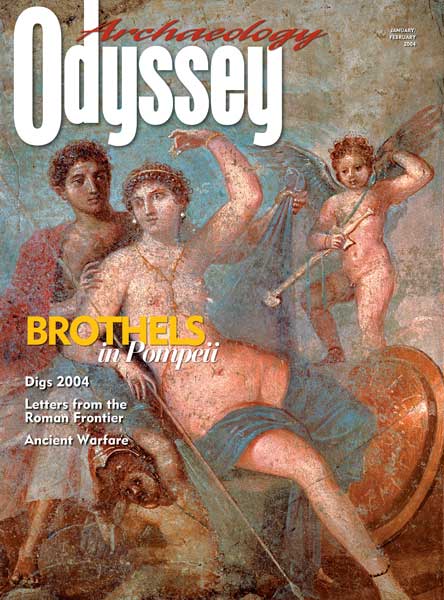Archaeology Odyssey, January/February 2004

Features
Pompeii’s material remains, frozen in time by the eruption of Mount Vesuvius, offer an unparalleled look at what a first-century A.D. Roman city was like. We are all familiar with Pompeii’s lavish villas and colorful wall paintings—some of which, wrote a bashful Mark Twain, “no pen could have the hardihood to describe.” But […]
In March 1973 the British archaeologist Robin Birley made a puzzling discovery. He had spent years in the thick, gray clay of northern England, excavating a first-century A.D. Roman fort called Vindolanda, but he had never before encountered so many small slivers of wood. Inwardly, he even began to wonder about the possibility of […]
Siege warfare was the most arduous and terrifying form of war in the ancient world. For the attacked, defeat threatened not only their warriors but their women and children. For the attackers, a siege meant long weeks in a filthy camp, short rations and backbreaking labor under extremely hazardous conditions. Massacre, enslavement and rape […]
As the 2004 Summer Olympic Games in Athens approach, people from Kalamazoo to Katmandu are refocusing on the ancient world as never before. Images of the Parthenon and Mycenaean masks appear in print ads, movies are set in ancient Rome and Jerusalem, and documentaries are full of aqueducts, pyramids and Persians. Antiquity is “in.” […]
